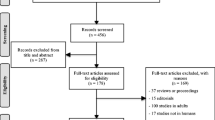Abstract
Objectives
To investigate the association between the triggering receptor expressed on myeloid cells-1 (TREM-1) levels and prognosis in septic children.
Methods
Patients admitted to pediatric intensive care units (PICU) of three tertiary centers were included in this prospective observational study. Serum samples were taken at admission from patients who were hospitalized with sepsis.
Results
Of the 87 patients included, 34 (39.1%) had severe sepsis and 53 (60.9%) had septic shock. The median age was 2 y (2 mo to 16 y). TREM-1 values were found to be significantly higher in septic shock patients 129 pg/ml (min 9.85- max 494.90) compared to severe sepsis 105 pg/ml (min 8.21- max 289.17) (p = 0.048). Despite higher TREM-1 levels been measured in non-survivors compared to survivors, it was not statistically significant [168.98 pg/ml (min 9.85- max 494.90) vs. 110.79 pg/ml (min 8.21- max 408.90), (p = 0.075)].
Conclusions
Admission TREM-1 levels were higher in septic shock compared to severe sepsis patients. There was no association between mortality and TREM-1 levels in sepsis. TREM-1 measurements should be used carefully in pediatric sepsis prognosis.


Similar content being viewed by others
References
Pomerantz WJ, Weiss SL. Systemic inflammatory response syndrome (SIRS) and sepsis in children: Definitions, epidemiology, clinical manifestations, and diagnosis. Available at: http://www.uptodate.com/. Accessed 1 Nov 2018.
Goldstein B, Giroir B, Randolph A. International consensus conference on pediatric Sepsis. International pediatric sepsis consensus conference: definitions for sepsis and organ dysfunction in pediatrics. Pediatr Crit Care Med. 2005;6:2–8 Review.
Hanna W, Wong HR. Pediatric sepsis: challenges and adjunctive therapies. Crit Care Clin. 2013;29:203–22.
Randolph AG, McCulloh RJ. Pediatric sepsis: important considerations for diagnosing and managing severe infections in infants, children, and adolescents. Virulence. 2014;5:179–89.
Çelik Ü, Alhan E. Sepsis: etiology-diagnosis-clinic. J Pediatr Sci. 2007;3:27–35.
Fan SL, Miller NS, Lee J, Remick DG. Diagnosing sepsis - the role of laboratory medicine. Clin Chim Acta. 2016;460:203–10.
Colonna M, Facchetti F. TREM-1 (triggering receptor expressed on myeloid cells): a new player in acute inflammatory responses. J Infect Dis. 2003;187:S397–401.
Sharif O, Knapp S. From expression to signaling: roles of TREM-1 and TREM-2 in innate immunity and bacterial infection. Immunobiology. 2008;213:701–13.
Qian L, Weng XW, Chen W, Sun CH, Wu J. TREM-1 as a potential therapeutic target in neonatal sepsis. Int J Clin Exp Med. 2014;7:1650–8.
Vardar F. Approach to sepsis in children: treatment. J Pediatr Infect. 2007;1:109–14.
Alabaz D. Sepsis in childhood. J Pediatr Sci. 2011;7:1–5.
Pierrakos C, Vincent JL. Sepsis biomarkers: A review. Crit Care. 2010;14:R15.
Gibot S. Clinical review: role of triggering receptor expressed on myeloid cells-1 during sepsis. Crit Care. 2005;9:485–9.
Gibot S, Massin F, Le Renard P, et al. Surface and soluble triggering receptor expressed on myeloid cells-1: expression patterns in murine sepsis. Crit Care Med. 2005;33:1787–93.
Weber B, Schuster S, Zysset D, et al. TREM-1 deficiency can attenuate disease severity without affecting pathogen clearance. PLoS Pathog. 2014;10:e1003900.
How CK, Chern CH, Wu MF, et al. Expression of the triggering receptor expressed on myeloid cells-1 mRNA in a heterogeneous infected population. Int J Clin Pract. 2009;63:126–33.
Lin YT, Tseng KY, Yeh YC, Yang FC, Fung CP, Chen NJ. TREM-1 promotes survival during Klebsiella pneumoniae liver abscess in mice. Infect Immun. 2014;82:1335–42.
Oku R, Oda S, Nakada TA, et al. Differential pattern of cell-surface and soluble TREM-1 between sepsis and SIRS. Cytokine. 2013;61:112–7.
Ruiz-Pacheco JA, Vivanco-Cid H, Izaguirre-Hernández IY, et al. TREM-1 modulation during early stages of dengue virus infection. Immunol Lett. 2014;158:183–8.
Marioli A, Koupetori M, Raftogiannis M, et al. Early changes of the kinetics of monocyte trem-1 reflect final outcome in human sepsis. BMC Immunol. 2014;23:585.
Knapp S, Gibot S, de Vos A, Versteeg HH, Colonna M, van der Poll T. Cutting edge: expression patterns of surface and soluble triggering receptor expressed on myeloid cells-1 in human endotoxemia. J Immunol. 2004;173:7131–4.
Richeldi L, Mariani M, Losi M, et al. Triggering receptor expressed on myeloid cells: role in the diagnosis of lung infections. Eur Respir J. 2004;24:247–50.
Gingras MC, Lapillonne H, Margolin JF. TREM-1, MDL-1, and DAP12 expression is associated with a mature stage of myeloid development. Mol Immunol. 2002;38:817–24.
Buijs EA, Zwiers AJ, Ista E, et al. Biomarkers and clinical tools in critically ill children: are we heading toward tailored drug therapy? Biomark Med. 2012;6:239–57.
Fortin CF, Lesur O, Fulop T Jr. Effects of aging on triggering receptor expressed on myeloid cells (TREM)-1-induced PMN functions. FEBS Lett. 2007;581:1173–8.
Peng LS, Li J, Zhou GS, Deng LH, Yao HG. Relationships between genetic polymorphisms of triggering receptor expressed on myeloid cells-1 and septic shock in a Chinese Han population. World J Emerg Med. 2015;6:123–30.
Acknowledgments
The authors thank all of the participants and their families for contributing to this study, Özgür Bayturan, for criticizing the article and Hatice Uluer helping for statistical analysis.
Author information
Authors and Affiliations
Corresponding author
Ethics declarations
Conflict of Interest
None.
Source of Funding
Scientific Projects Department of Ege University supported this work.
Additional information
Publisher’s Note
Springer Nature remains neutral with regard to jurisdictional claims in published maps and institutional affiliations.
Rights and permissions
About this article
Cite this article
Şen, S., Kamit, F., İşgüder, R. et al. Surface TREM-1 as a Prognostic Biomarker in Pediatric Sepsis. Indian J Pediatr 88, 134–140 (2021). https://doi.org/10.1007/s12098-020-03355-3
Received:
Accepted:
Published:
Issue Date:
DOI: https://doi.org/10.1007/s12098-020-03355-3




